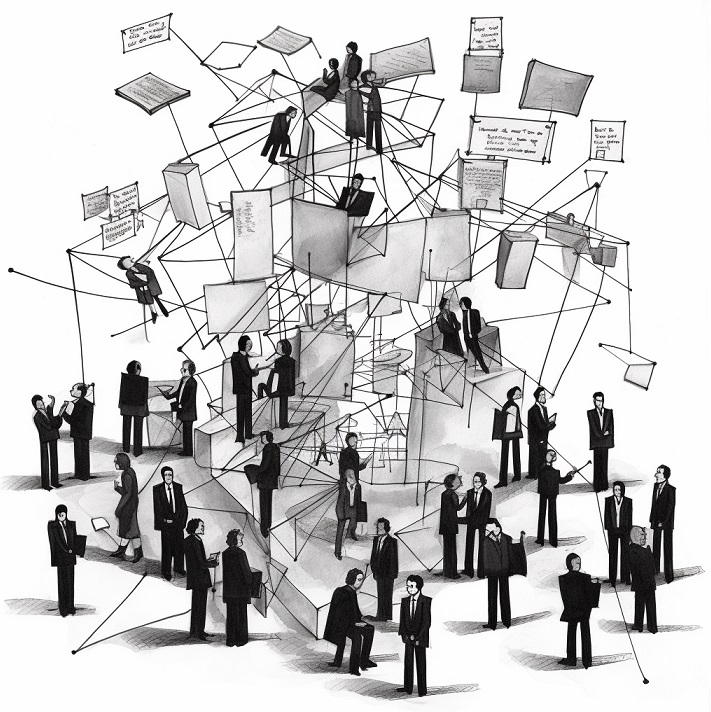 (Image Credit: Doug Buckley of http://hyperactive.to)
(Image Credit: Doug Buckley of http://hyperactive.to)
I am pleased once again to host ASQ Influential Voices blogger John Hunter’s Management Improvement Carnival, featuring some interesting or noteworthy articles that have been posted over the past year. Be sure to check out previous installations of the Carnival to get a broad sample of the most recent blog posts that are relevant to managers who are interested in quality, innovation and process improvement.
This post covers two of the four blogs I’m reviewing for the Management Improvement Carnival: StatsMadeEasy and the Harvard Business Review’s (HBR) collection of insights from Peter Bregman.
The first blog I reviewed for 2012 is Mark Anderson’s “Stats Made Easy” at http://statsmadeeasy.net. I like this blog because I teach statistics, and I really appreciate the efforts Mark goes to each year to explain statistical concepts clearly and with flair.
In August, Mark reviewed some recent research, based on A/B testing, that indicates sans serif fonts attract more attention in blogs and email. This was great news for me – a dedicated disciple of Calibri! In November, he drew an interesting conclusion based on comparing Nate Silver’s presidential election predictions on the FiveThirtyEight blog to hurricane predictions using spaghetti charts… that perhaps it’s OK to average the results of stochastic output from simulations to yield a “best guess” forecast. I’m not sure how rigorous this approach is, but certainly, the result that ” meteorologists now predict the bulls-eye within a 100-mile radius—compared to 350 miles 25 years ago” is significant. As a meteorologist, this intrigues me, and makes me want to delve into even more research on how spaghetti charts are statistically useful for prediction.
Mark’s posts are not limited to statistical reflections. In “Brain Drizzling? Try Linking Instead” he reflects on Osborn’s techniques for brainstorming, and suggests that finding associations between seemingly unrelated concepts may, in fact, be the preferred approach for generating truly novel ideas. As the shared basis for historically leveraged methods like TRIZ, I’d support this stance.
As a university professor, I was also intrigued by one of Mark’s posts from October, where he discussed French President Hollande’s call to “ban all homework”. Supported by the Wall Street Journal’s MarketWatch, the data does indeed show that there is a negative association between the amount of hours spent each night studying, and students’ performance on skills exams.
The second blog I reviewed for 2012 is Peter Bregman’s posts to the Harvard Business Review online blog network. Peter advises CEOs on strategy and leadership, and is not afraid to venture into less mainstream topics like meditation and emotions. This really appeals to me, since I believe that positive psychology has a role to play in the future of quality improvement.
In January, he tackled “The Biggest Myth in Time Management,” explaining that we set ourselves up for failure when we believe we can get it all done. In fact, if we completed all of the tasks on our to-do lists, we’d have nothing to do – and there would be no progress to be made! Progress itself is a journey, and the fact that our to-do lists grow and expand and never seem to “end” is actually a wonderful sign – it’s a sign that we are expanding our capabilities, our potentials, and our ability to add value to the situations around us. Peter recommends, instead, that we focus on the devil of “follow-through” (or willpower) to make us feel more productive.
One of his February posts examined the role of expectations – and whether they are useful, or can hinder our efforts. I’m interested in this topic because of the Buddhist encouragement to release all expectations in order to release desire… and thus suffering. Sounds really useful, but I just haven’t been able to get there myself (although I can easily see problems with others’ expectations). He proposes a solution though:
High expectations can have a positive effect; people need a high bar to stretch towards. But I think many of us take it too far. We slip so easily into criticisms of ourselves and those around us — family, friends, coworkers, public figures — that we no longer expect people to be human beings. And when we shame ourselves and others for failing, we make things worse. We contribute to pain while nurturing impotence.
When we face weakness — ours or someone else’s — it doesn’t help to blame someone or something, pretend it’s not important, or simply decide to change. And it’s not sufficient to identify a three-step process to fix the problem. So what does help?
Here’s the best I’ve come up with: compassion.
One of the things I try to do, personally, is manage my emotional guidance system – and always try to move towards better-feeling thoughts. One of Peter’s May posts asks “Do You Know What You Are Feeling?” He suggests that being more mindful, more conscious of your feelings from moment to moment – might actually help you make better decisions in the workplace, especially when those decisions involve how you act and react in response to others.
He also recommends not setting goals in 2013. Are you strong enough to accept that challenge?
I strongly suggest that you just go read ALL of Peter’s posts. He is so reflective and honest in his assessments of self that I think he provides an excellent example for all of us.
Part 2 of my Carnival report follows tomorrow.







Leave a Reply